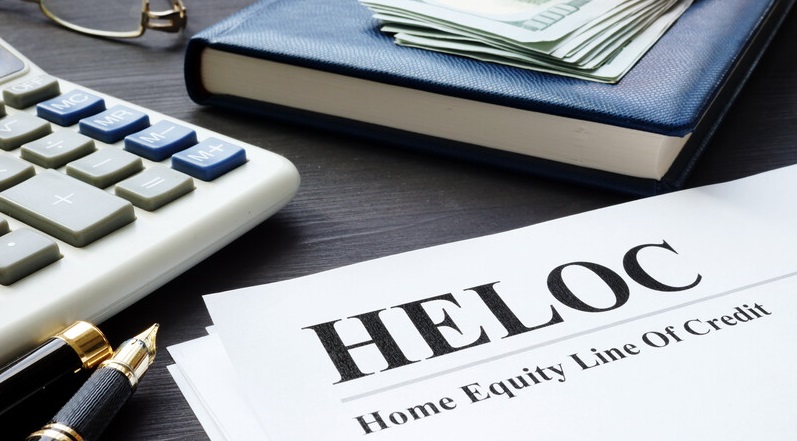Home Equity Lines of Credit (HELOC)
We don’t often think of the housing market as a store of usable wealth. Yet, a good portion of the wealth created by people is sunk into this one investment.
That means the value is leveraged by the banks when they lend out. They enjoy the profit from having your asset and when your mortgage is astronomically priced, you really are left out.
Your home equity is a key asset to the banking and real estate investment industry and you’re not participating, other than being the one who provides the value.
Historically, home buyers get a loan/mortgage to purchase or renovate, but the banks actually own the property until the full home loan is repaid. Leveraging that growing equity or wealth was often not permitted, other than allowing a second mortgage, which is usually not a financially sound tool for accessing funds.
Today, homes are considered a financial asset which can be leveraged for other purposes. Your real estate equity then is turned into collateral for other investments, or expenses (education expenses) or to renovate the property to be used as a rental income unit. Some unfortunately, may use their equity to get through an upcoming recession.
Even if you have a poor credit rating, the home equity line of credit funds might be there for you to access, while other credit forms will not be.
The HELOC is an interesting financial tool that can create instant cash for owners to leverage for other purchases or investments. It’s risky to leverage your home, but most owners of single detached houses are comforted by the persistent value of their property. Demand for houses never seems to ease. The single detached housing market remains strong.
What is a HELOC?
Bankrate defines a HELOC or home equity Line of Credit as a form of home equity loan. It is a variable-rate lending product that’s similar to a credit card. You can access a credit line that you can draw cash from whenever needed (to pay for materials, medical services, or to pay other debts/investments) and pay back as required by the terms of the agreement.
Reasons to Use a HELOC
Although down in number, there are millions of homeowners still wanting to renovate their properties for a variety of reasons. With the way the housing market is now, homeowners don’t want to move.
And if you’re one of those who have built up some real estate equity, you might be able to pay down other high interest debt using what’s known as a HELOC.
Bank loans, and refinancing mortgages are out now as ways to reorganize debt loads. Instead, homeowners have been using HELOCS or home equity lines of credit.
In your search for lower home loan or mortgage rates, you often discover home equity lines of credit.
 HELOCs or home equity lines of credit are a type of home equity loan. The big advantage they offer homeowners is that they are a ready to access source of funds. They can also be used to pay down existing debt, that might otherwise have to be refinanced another way at a steeper rate.
HELOCs or home equity lines of credit are a type of home equity loan. The big advantage they offer homeowners is that they are a ready to access source of funds. They can also be used to pay down existing debt, that might otherwise have to be refinanced another way at a steeper rate.
For instance, a cash-out refinance can replace your current home mortgage with a larger home loan. A HELOC however, adds to your current mortgage.
Home equity line of credit interest rates are aligned with a benchmark interest rate and as that rises, so will your HELOC rate. Given interest rates are on the rise, you may have to pay increasing sized interest payments and a big final payment. However, if rates go down after the next recession, your required payments may fall as well.
A few points about Home Equity Lines of Credit:
- HELOC’s often have lower upfront costs
- HELOCs usually have lower interest rates than credit cards
- HELOCs have no closing costs or low fees
- HELOC interest rates can move up or down quickly
- HELOCs may have lender fees, application fees, or early closure fees
- HELOC payments missed can damage your credit rating
Interest paid on HELOCs can be tax deductible (up to $750,000 total mortgage debt) if used to buy, build, or create substantial improvements on your home. You can use the HELOC funds to invest in the stock market and that money could be used within your retirement savings plan (stocks to buy).
If the loan and new renovation improve the value of your home, you’ll likely see your property taxes increase.
You may be able to receive your funds quickly, within a week of your application being accepted by the lender.
Your current bank is not often incentivized to give you the best rate. It’s wise to look to the secondary market for a HELOC with a lower interest rate.
Small banks and credit unions might be a good source for lower interest rate loans including line of credit products. If your credit rating is good, you have lots of equity, and the amount requested is reasonable, the risk for them is much lower.
Some lenders will offer low introductory rates for a period and some offer rate caps to help you against the threat of very high interest rates.
Be careful of an agreement that will require you to repay your remaining balance in one lump sum. It could be a difficult situation for some borrowers if they don’t prepare for it.
The key right now is predicting/calculating your payments and total debt and how payments might increase over time, as the Fed raises the central lending rate.
Lenders may let you choose the draw period where you can spend funds, and then the period of repayment. Ensure you can handle the repayment requirements.
Whenever possible, look for fixed interest rates even that require a fee, because with variable rates, repayments could be frightening.
Where can you obtain a Home Equity Line of Credit?
Here’s a few sources for HELOCs:
- Bank of America HELOCS https://www.bankofamerica.com/home-equity/ who have a fixed rate option.
- Bankrate.com HELOCS https://www.bankrate.com/home-equity/heloc-rates/
- BMO Harris HELOCS https://www.bmoharris.com/main/personal/loans-and-lines-of-credit/home-equity-line-of-credit/
- US Credit Union HELOCS https://www.usccreditunion.org/products/home-equity/
- California Credit Union Helocs https://www.ccu.com/borrow/personal/heloc/
- Credit Union of Denver Helocs https://www.cudenver.com/Borrow/Home-Loans/Home-Equity-Line-of-Credit
- Bank of the West, BNP Paribas Helocs https://www.cudenver.com/Borrow/Home-Loans/Home-Equity-Line-of-Credit
- US Bank Helocs https://www.usbank.com/home-loans/home-equity/home-equity-line-of-credit.html
- Suncoast Credit Union Florida HELOCs https://www.suncoastcreditunion.com/personal/borrow/home-equity-home-equity-loans
- SeacostBank Florida HELOCS https://www.seacoastbank.com/personal/lending/consumer-lending/heloc
- MASS Bay Credit Union (Boston) HELOCs https://www.massbaycu.org/products/heloc/
- Republic Bank HELOCS New York HELOCs https://www.myrepublicbank.com/rates-nyc
- Bank of Texas HELOCs https://www.bankoftexas.com/personal/products-and-services/loans-and-lines-of-credit/home-loans/home-equity-lines-of-credit
- RBFCU HELOCs https://www.rbfcu.org/home-loans-realty/home-equity-loans
- Illinois Bank & Trust HELOCs https://www.illinoisbank.com/personal-banking/home-equity-line-of-credit
- Singnature Bank of Georgia HELOCs https://www.signaturebankga.com/borrowing/personal-loans/home-equity-lines-of-credit/
Buy a House | Best Cities to Buy Property | Mortgage Rates Today | Sell my House | Real Estate Leads | Seller Real Estate Leads | 2024 Housing Market | Florida Housing Market | California Real Estate Market | New York Real Estate | Toronto Housing Market | Housing Crisis | Housing Prices | Reverse Mortgages | Low Mortgage Rates Today

